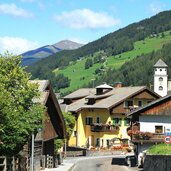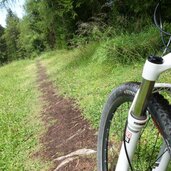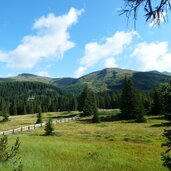Bagni di Moso, a historic spa resort, is beautifully situated in the Val Fiscalina valley below the alpine meadows on Mt. Croda Rossa
Due to the construction of the Riggertal loop and safety-related works, sections of the Val Pusteria Railway will be closed until January 2026. A rail replacement bus service will be in operation.
The three main… read more
In Sesto, in the Waldheim recreation area, there are the Sesto open-air swimming pool and the Waldile playground. Afterwards, the village of Moso comes into view: Here you will find yourself between the Rio Fiscalino and the Rio Bianco, graceful rippling waters that flow further out of the valley into the Drava river. If you follow the Rio Fiscalino, it will accompany you all the way to the Piano Fiscalina and through the beautiful Val Sasso Vecchio valley towards the Three Peaks.
The location in the nature park and its springs made the village famous long ago. The spring water of the Bauernbadl Bad Moos, the Moso Baths, one of the health resorts in South Tyrol, has been documented since 1765 AD and was used for the popular drinking and bathing cures, especially in the 19th century when the first mountain guides showed interested guests the landscape of the Sesto Dolomites from close up. This came to an end when, during WWI, the Dolomite front on the Austrian-Italian border ran here and the Mountain Warfare raged. The soldiers fought against other soldiers, but also against the cold and the natural dangers that the high mountains brought.
Today, the houses, accommodation establishments and shops of Moso (Moso) are gathered around the St. Joseph Church at the entrance to the Val Fiscalina. This picturesque valley is one of the most beautiful in the Three Peaks Nature Park in the Sesto Dolomites and is only accessible by car during the summer months from the end of June to the beginning of October if you have a valid transit permit - otherwise by bus, on foot and by bike. The cable car to the Croda Rossa starts on the outskirts of the village: The family mountain, famous for its mountain huts and the Bellum Aquilarum open-air museum, is also part of the 3 Zinnen Dolomites Ski Resort.







.JPG)






























